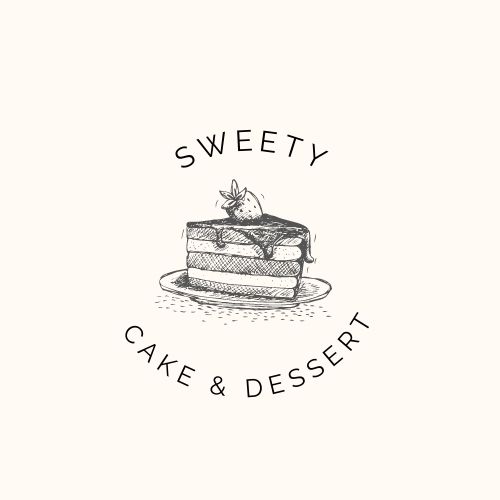A sweet cake, adorned with layers of flavors, textures, and delectable toppings, is the epitome of dessert perfection. From classic favorites like chocolate and vanilla to unique creations featuring exotic ingredients, the world of sweet cakes is a treasure trove of indulgence. In this article, we will explore the enchanting world of sweet cakes, from their rich history to the art of baking and decorating these delightful confections. Prepare your taste buds for a delectable journey into the realm of sweet cake delights.

The Sweet Cake: A Brief History
Sweet cakes, in various forms, have been cherished by cultures around the world for centuries. Here’s a brief glimpse into the history of these irresistible treats:
- Ancient Beginnings: The concept of sweet cakes dates back to ancient civilizations, where honey and dried fruits were used to create simple, sweetened bread-like cakes.
- Medieval Europe: During the Middle Ages, European bakers began experimenting with spices, fruits, and nuts to enhance the flavor and sweetness of their cakes. These early cakes were often dense and heavily spiced.
- Renaissance Elegance: The Renaissance period saw the emergence of more refined cake recipes, with the addition of ingredients like sugar, eggs, and butter. These cakes were enjoyed by the aristocracy and featured intricate decorations.
- 19th Century Innovation: The 19th century witnessed the development of baking powder and baking soda, leading to the creation of lighter, fluffier cakes. This era also saw the popularization of layer cakes, with frosting between the layers.
- 20th Century Icon: The 20th century introduced the world to the iconic birthday cake, often adorned with colorful icing and candles. It also saw the rise of cake mix products, making cake baking more accessible to home bakers.

The Art of Baking a Sweet Cake
Baking a sweet cake is a delightful journey that combines science and creativity. Whether you’re following a cherished family recipe or trying something new, here are the basic steps to bake a sweet cake:
Ingredients:
- Flour
- Sugar
- Eggs
- Butter or oil
- Baking powder or soda
- Flavorings (vanilla, chocolate, fruit extracts, etc.)
- Liquid (milk, buttermilk, yogurt, etc.)

Instructions:
- Preparation: Preheat your oven to the required temperature and prepare your cake pans by greasing and flouring them or lining them with parchment paper.
- Mix Dry Ingredients: In a mixing bowl, whisk together the dry ingredients, typically flour, sugar, and leavening agents like baking powder or soda.
- Mix Wet Ingredients: In a separate bowl, combine the wet ingredients, including eggs, butter or oil, flavorings, and the chosen liquid.
- Combine Wet and Dry: Gradually add the wet mixture to the dry mixture, stirring until well combined. Be careful not to overmix, as this can lead to a dense cake.
- Baking: Pour the cake batter into the prepared pans and bake in the preheated oven for the recommended time. Use a toothpick or cake tester to check for doneness; it should come out clean when inserted into the center.
- Cooling: Allow the cakes to cool in the pans for a few minutes before transferring them to a wire rack to cool completely.

Sweet Cake Variations and Inspirations
The world of sweet cakes offers an endless array of variations and inspirations, including:
- Classic Chocolate Cake: Moist, rich, and decadent, a classic chocolate cake is always a crowd-pleaser.
- Vanilla Sponge Cake: Light and airy, a vanilla sponge cake is a versatile base for a wide range of frostings and fillings.
- Fruit-Infused Cakes: Incorporate fruits like berries, citrus, or tropical fruits to add a burst of natural sweetness and freshness.
- Naked Cakes: These trendy cakes feature minimal frosting, allowing the cake layers to peek through for a rustic and visually appealing look.
- Tiramisu Cake: Inspired by the beloved Italian dessert, this cake features layers of coffee-soaked sponge cake and mascarpone cream.
- Red Velvet Cake: A Southern classic, red velvet cake is known for its distinctive red color and subtle cocoa flavor, paired with cream cheese frosting.
- Cheesecake: Combining the richness of cheese and the sweetness of cake, cheesecake is a delightful fusion dessert.

Decorating Your Sweet Cake
Decorating a sweet cake is an opportunity to let your creativity shine. Consider these decorating options:
- Frosting: Use buttercream, cream cheese, ganache, or fondant to cover and decorate the cake.
- Piping: Create intricate designs, borders, and messages using piping techniques.
- Fruit and Berries: Fresh fruit and berries add a burst of color and natural sweetness.
- Edible Flowers: Delicate edible flowers like violets and pansies can add an elegant touch.
- Sprinkles and Decorations: Play with sprinkles, edible glitter, chocolate shavings, or even edible gold leaf for added flair.

A sweet cake is more than just a dessert; it’s a celebration of flavors, textures, and creativity. Whether you’re baking for a special occasion or simply indulging your sweet tooth, the world of sweet cakes offers endless possibilities for exploration and delight. So, roll up your sleeves, preheat your oven, and embark on
